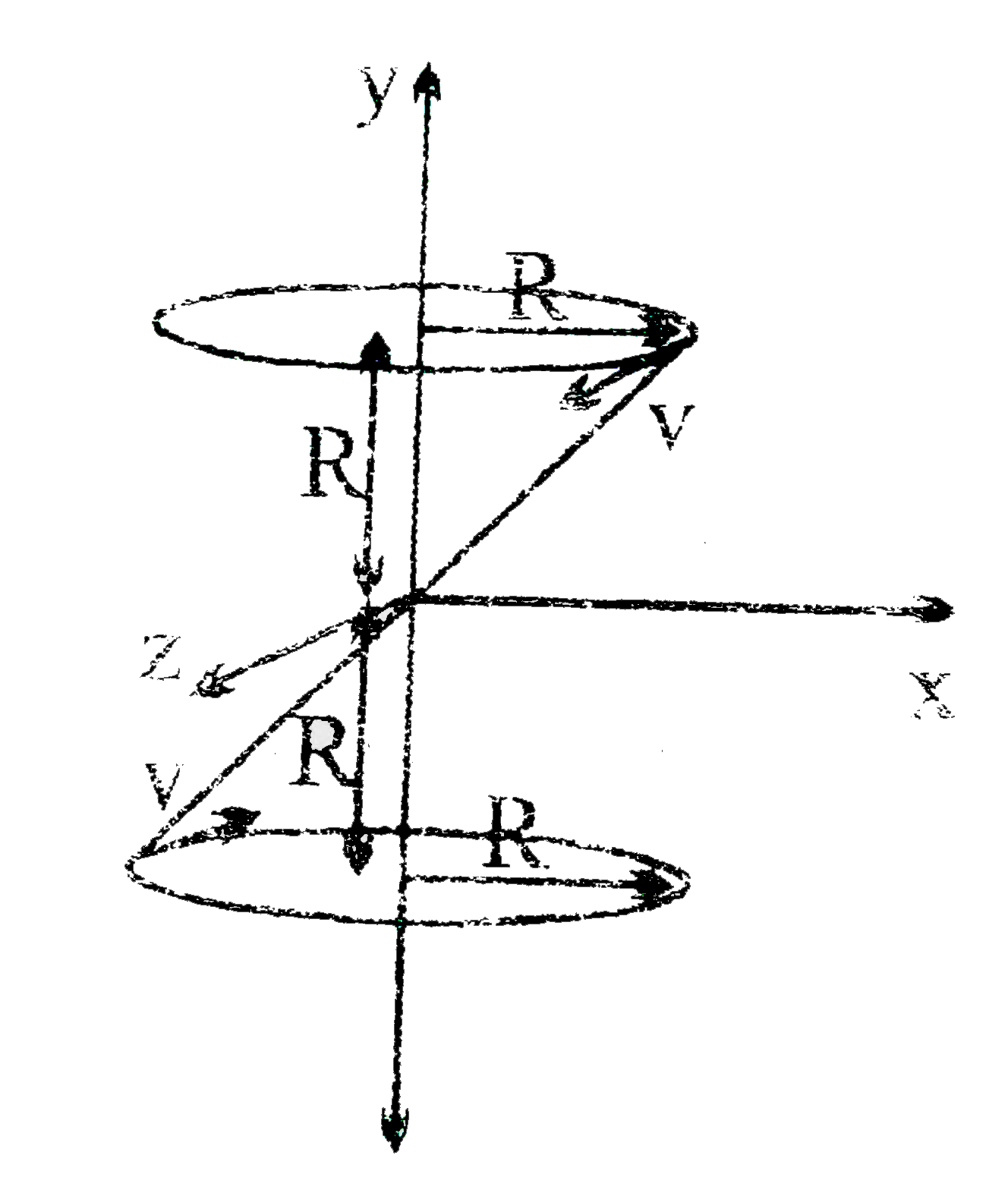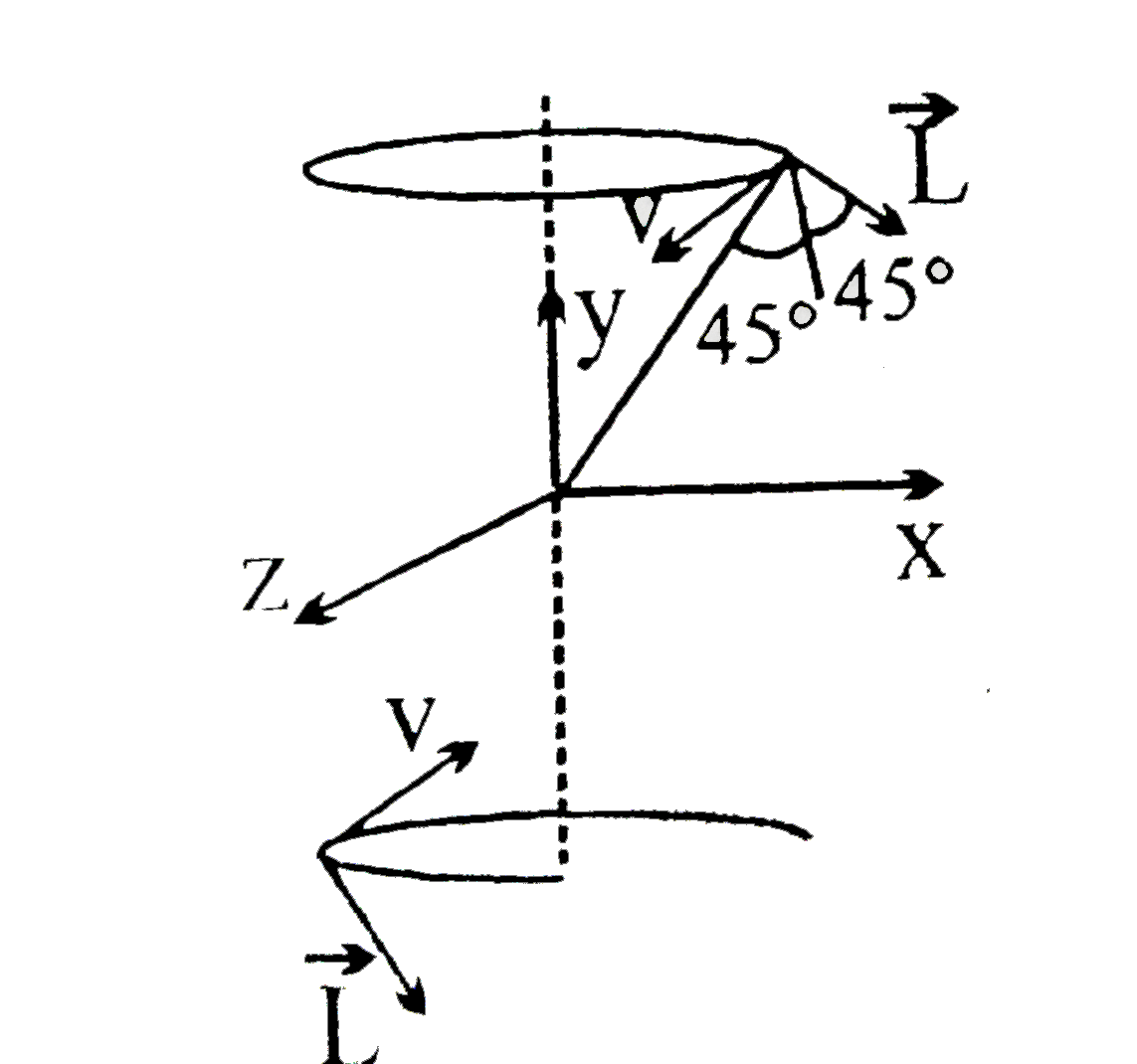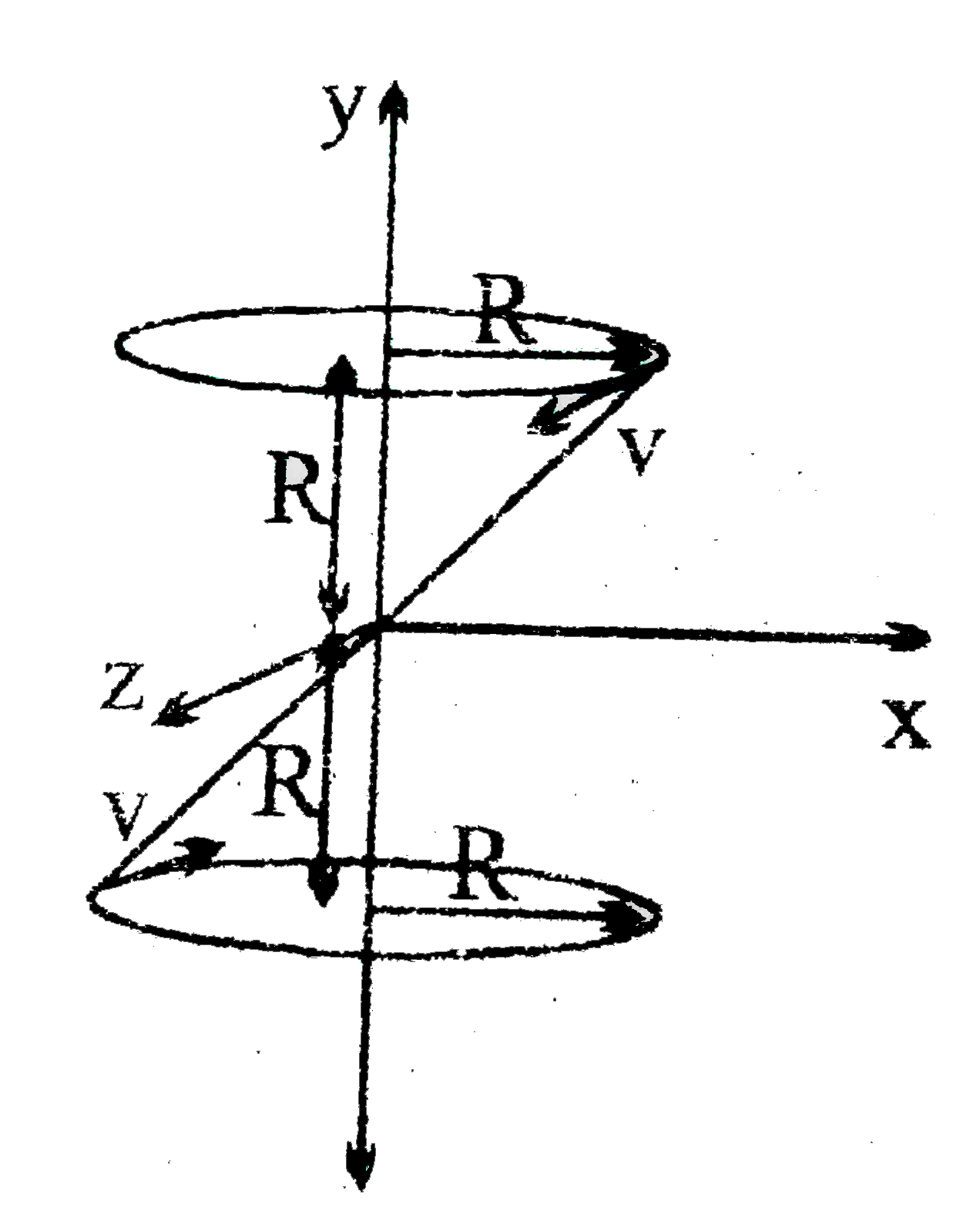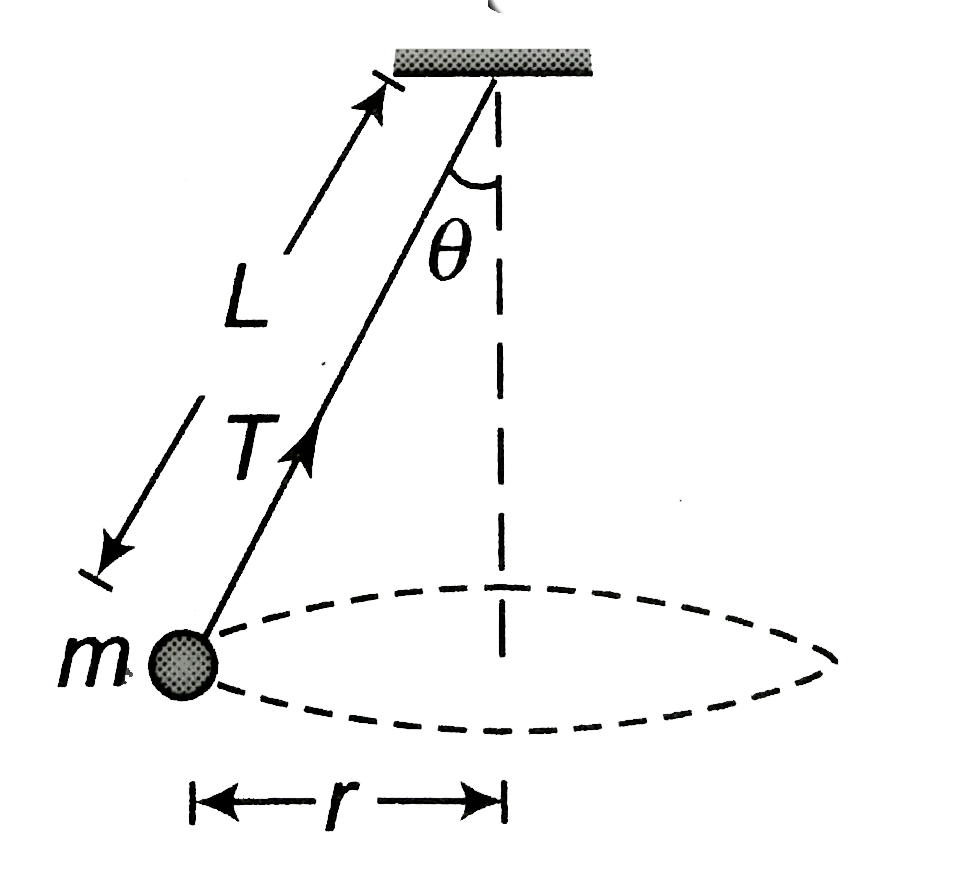Two particles of mass m each are rotating parallel to xz plane in circle of radius R as shown. They are connected by a mass less rod of length 2√2R as shown.

Consider the situation when the particles are at (R, R,0) and (-R, -R, 0). Neglect gravity and any kind of friction. Answer following questions
Choose the correct statement
The correct Answer is:C
L in y direction remains constant zy=0

L at this instant is along x direction & rotates in xz plane
⇒Δ→L rotates in xz plane
Topper's Solved these Questions
- TEST PAPERSBOOK - BANSALCHAPTER - TEST PAPERSEXERCISE - PHYSICS PART (A)
32 Videos
- TEST PAPERSBOOK - BANSALCHAPTER - TEST PAPERSEXERCISE - PHYSICS PART (B)
3 Videos
- TEST PAPERSBOOK - BANSALCHAPTER - TEST PAPERSEXERCISE - PHYSICS PART- C
4 Videos
- SEMICONDUCTORSBOOK - BANSALCHAPTER - SEMICONDUCTORSEXERCISE - CBSE Question
32 Videos
Similar Questions
Two particles of equal mass m0 are moving round a circle of radius r due to their mutual gravitational interaction. Find the time period of each particle.
View SolutionTwo particles of equal mass m0 are moving round a circle of radius r due to their mutual gravitational interaction. Find the time period of each particle.
View Solution
Knowledge Check
Two particles of mass m each are rotating parallel to xz plane in circle of radius R as shown. They are connected by a mass less rod of length 2√2R as shown.

Consider the situation when the particles are at (R, R,0) and (-R, -R, 0). Neglect gravity and any kind of friction. Answer following questions
The angular velocity vector of the system of two particles and the total angular momentum of system about origin make an angle ofA45∘B90∘C0∘D180∘If a particle of mass m is moving in a horizontal circle of radius r with a centripetal force (−1/r2) , the total energy is
A−4rB−2rC−1rD−12rA paricle of mass m is tied to a light string of length L and moving in a horizontal circle of radius r with speed v as shown. The forces acting on the particle are
 AmgandTBmg,T,mv2rdirected in wardsCmg,T,mv2rdirected outewardsDmv2ronly
AmgandTBmg,T,mv2rdirected in wardsCmg,T,mv2rdirected outewardsDmv2ronly
If a particle of mass m is moving in a horizontal circle of radius r with a centripetal force (−1/r2) , the total energy is
View Solution_S01_003_Q01.png)
Two particles of equal mass (m) each move in a circle of radius (r) under the action of their mutual gravitational attraction find the speed of each particle.
View Solution_S01_003_Q01.png)
Two particles of equal mass (m) each move in a circle of radius (r) under the action of their mutual gravitational attraction find the speed of each particle.
View SolutionA particle of mass m describes a circle of radius r . The centripetal acceleration of the particle is 4r2 . What will be the momentum of the particle ?
View SolutionA particle of mass m describes a circle of radius r . The centripetal acceleration of the particle is 4r2 . What will be the momentum of the particle ?
View Solution
